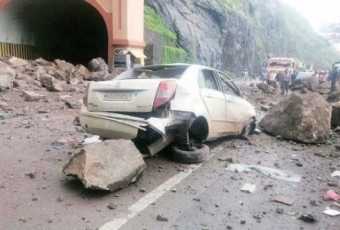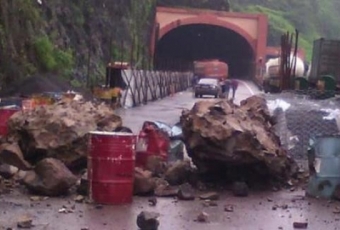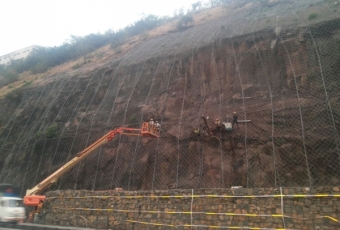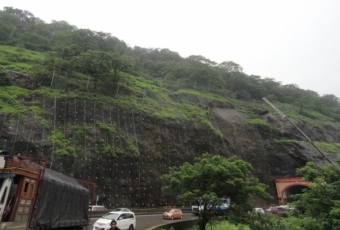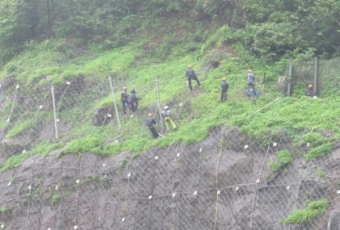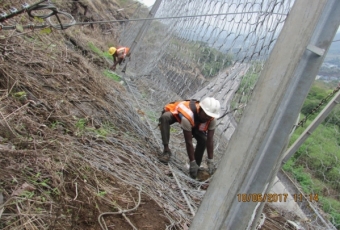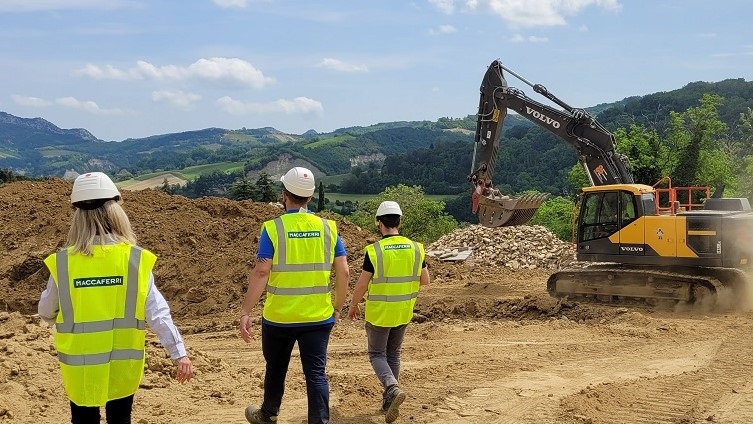Dynamic Barriers
2016
MAHARASHTRA - MUMBAI - PUNE EXPRESSWAY - India
Mumbai State Road Development Corporation
Maccaferri Environmental Solutions Pvt Ltd
Maccaferri/ Stup Consultants Pvt Ltd
MUMBAI PUNE EXPRESSWAY – ROCKFALL MITIGATION WORKS AT GHAT SECTION
Problem
Mumbai-Pune expressway is India’s first six-lane concrete expressway in Maharashtra connecting the financial capital of India (Mumbai) with state cultural capital (Pune). Built along the Sahyadri mountain ranges, through passes and tunnels, it is recognised as one of the most dangerous expressways prone to a series of rockfall and landslides, especially near tunnel portals causing a heavy damage to infrastructure, traffic disruptions and causalities specially during monsoon season. Challenges faced: 1. Has to be done as emergency protection work. 2. Fast execution was required because of the heavy traffic road. 3. Bigger threats of rockfall during installation.
Solution
After conducting detailed engineering investigation and taking geological and geotechnical observations of the experts into consideration, Maccaferri offered a customized combination of various rockfall mitigation measures, for the identified critical stretches of the expressway. Loose scaling was done for the removal of unstable rock mass over the slope. Secured drapery system was proposed to hold the unstable mass which were on threshold of falling from the surfaces wherever the depth of instability was less than 2m. For instability more than 2m where deep seated rock failures are predicted, long nails were installed. Dynamic rockfall barriers were installed for trapping the falling rock blocks on to the expressway. In order to retain the in-situ stratum of the hillock portion of the final slope, soil nailing with gabion facia was also suggested. Perforated PVC drainage pipes wrapped with non woven geotextile were installed in multiple rows to dissipate the pore pressure inside the rock mass.

